Having a pet of your own, especially a guinea pig is quite a big responsibility regardless of anything you may hear. They need water, groomed, loved, and food.
As much as people love having a pet, it is also very important to figure out if you can afford everything a guinea pig needs.
So, how much is guinea pig food? The cost of guinea pig food depends on the country you live in. It is around $50 to $70 a month. It composes the average guinea pigs’ consumption of hay, pellets, fresh produce, and possible vitamin C supplements. You can get by a lot less if you have a nearby farm that can provide you with hay for your guinea pig.
In this article, you can get more information on the costs associated with feeding guinea pigs.
Table of Content
Diet Costs for Guinea Pigs
You cannot know the cost of a guinea pig diet if you don’t know what their diet is. So, the food that is the best for guinea pigs is the first thing we are talking about.
Hay
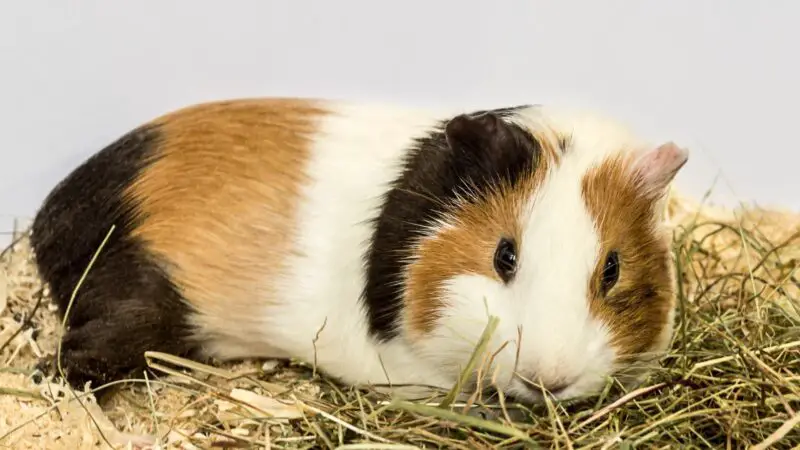
Hay is something that guinea pigs should always have in their cages. It is really beneficial for their digestive system and for their dental health. Make sure that they always have some hay close to them and it is fresh, green, and soft.
The best hay for guinea pigs is timothy hay. Of course, there are other types of good hay-like bluegrass or meadow hay, but some guinea pigs might not like the taste of it. They enjoy eating and playing with hay all day long.
Alfalfa hay is high in calcium so it is really good for pregnant guinea pig females. That high calcium intake is bad for a normal guinea pig.
Hay can actually be bought from pet stores. Timothy hay usually retails for $5 (4 Euros) up to $20 (17 Euros), depending on the amount of hay you want to buy. A 90 ounces bag (approximately 2.7 kg) will probably be close to $20. But it is far more convenient to get it directly from a local farm, where it is a lot cheaper.
Related: 8 Best Hay for Guinea Pigs: A Helpful Guide
Vegetables
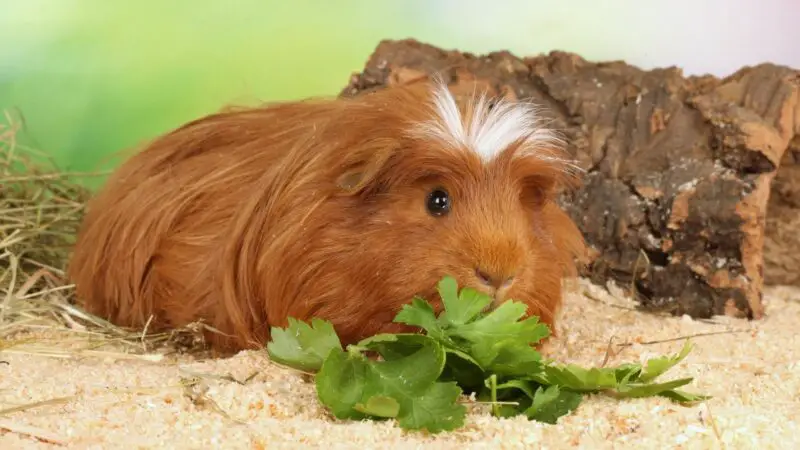
A cup of vegetables is the perfect amount for a guinea pig a day. The key here is to offer him a variety of veggies in that daily cup.
Guinea pig’s favorites are celery, cucumbers, bell peppers, and off-the-vine tomatoes. Other vegetables like beetroot and parsley. Also forage like clover and dandelion leaves should be given occasionally.
Pay attention to the vegetables. They need to be fresh. If they are not fresh enough to eat them yourself, then don’t give them to your guinea pig.
Also, another important aspect is to be careful with the calcium intake. Pay attention to the amount of calcium you feed them. A high amount of calcium can cause bladder stones.
Pellets
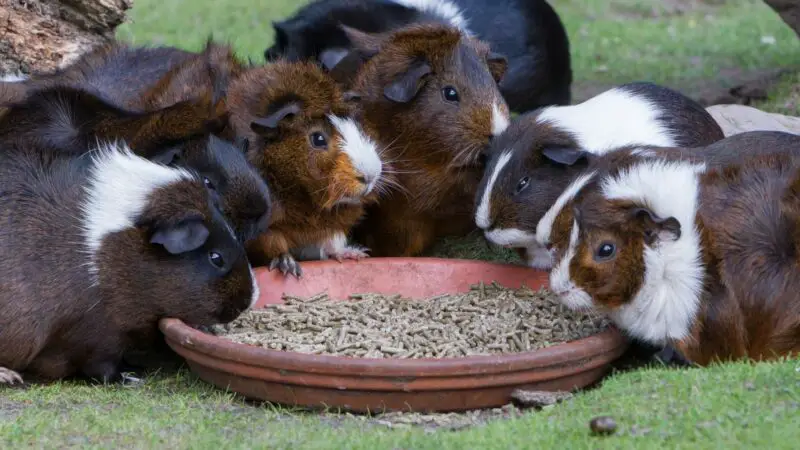
Give your guinea pig pellets high in vitamin C, a very important vitamin for them. Pellets are very high in energy so don’t give your guinea pigs too much of them. About an eighth of a cup would do the trick.
Avoid colorful pellets. They are unhealthy and provide timothy-based pellets for your guinea pigs. Alfalfa-based pellets are good for pregnant sows, not for average guinea pigs.
Also, don’t feed your guinea pigs pellets that are not specifically made for them. Don’t feed them rabbit pellets or any pellets made for other rodents.
All of these pellets contain different quantities of every vitamin and each one of the pellets is beneficial to its special type of rodent.
The price of pellets varies between $5 and $20 (4-17 Euros) depending on the size of the pellets, the nutrients you want, and the brand.
Related: 7 Best Guinea Pig Pellets: Brand Reviews and Quality Guide
Water
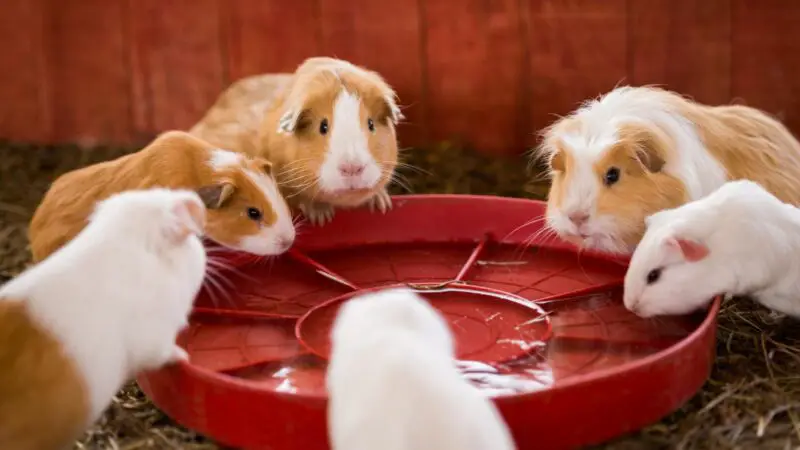
Water is very important for their overall health. They should always have fresh water in their bottles.
You need to scrub the bottles at least once a week. Bacteria and algae will grow on the inside of the bottles if you don’t clean them as often as you should. Also, the water nozzle should be cleaned as often as you remember so it doesn’t get dirty.
Related: 9 Best Water Bottles for Guinea Pigs (Reviews and Guides)
How to Clean the Water Bottle?
Empty the water bottle. Put some uncooked rice and a little water inside the bottle and shake it energetically. The rice will scrub the bottle and any greenish bacteria or algae should be removed.
However, if you still feel like the bottle is not clean enough, you can fill the bottle with white vinegar. This will furthermore kill the nasty things that might try to live in there.
After the white vinegar wash, rinse the bottle thoroughly before putting it back in the cage. Guinea pigs are very sensitive to taste and smell. So, if there is a small scent or the taste of vinegar in the water, they could hate it and stop reaching for water until you fix it.
Estimated Price of Guinea Pigs Food for a Month
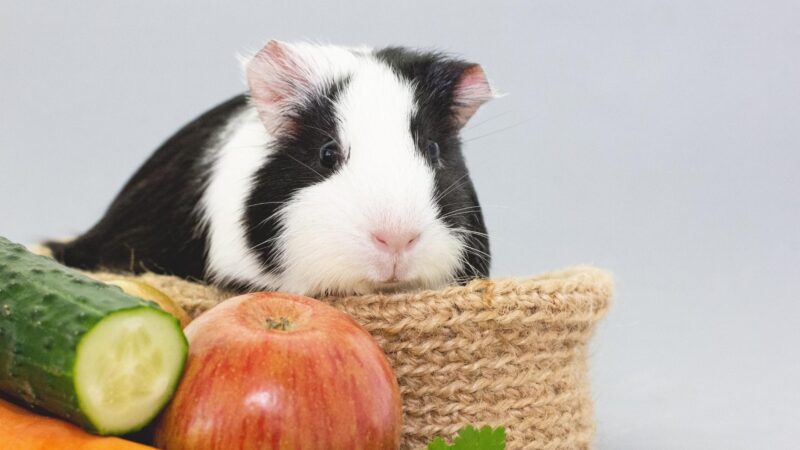
Hay needs to be available at all times for guinea pigs. A 45 pounds bag (around 20 kg) should last for 3 to 4 months. This means that 5 to 6 kg (10-15 pounds) is enough for a month. That would cost around $37 to $44 (31-37 Euros) a month.
However, guinea pigs don’t need a big amount of pellets, a kilogram (2.2 pounds should be enough). 5 pounds (2.2 kg) should last for about 2 months for the price of approximately $25 (22 Euros). This means $12 (11 Euros) a month.
So, with around $68 (60 Euros) you should be able to provide pellets and hay for your guinea pig monthly.
The price you pay for vegetables depends on the region you live in. But if you are a healthy person, you shouldn’t pay too much for their veggies. They eat a lot less than us humans.
Some Points to Consider When Choosing Guinea Pig Food
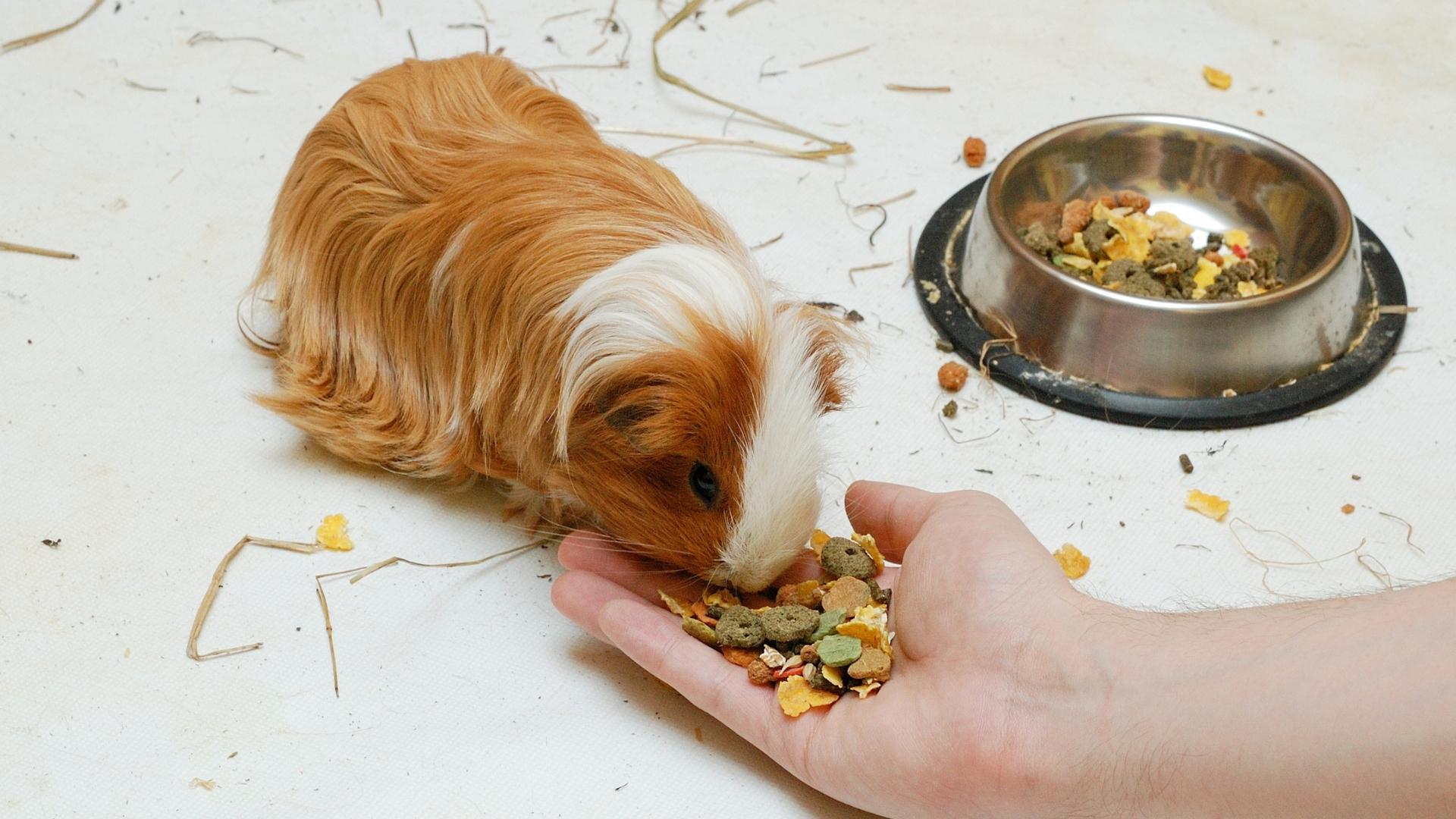
Guinea pigs cannot actually make vitamin C on their own, so they need to get it from food. The normal intake of vitamin C for them is somewhere between 10 and 30 mg.
A deficiency of vitamin C can cause a guinea pig to develop scurvy. It is a disease that guinea pigs are very prone to. The best source of vitamin C is the bell pepper. You can always supplement the vitamin C, but it is really unnecessary if you feed your guinea pigs the right amounts of pellets and bell pepper.
Another good piece of advice is to try to avoid putting vitamin C in their water. It is very possible for them to dislike the taste, so they might stop drinking water.
Don’t feed your little guinea pig unhealthy foods. Anything that contains high levels of sugar is a treat to them and should be given in moderation.
Fruits are good for them but in very small amounts, they can actually mess up with their digestive system. The same rule applies to starchy vegetables, such as potatoes.
Citric fruits should not be given to guinea pigs at all. The acidity of the fruits is irritating to their mouths. Also, food with high calcium contents should be avoided or fed in small quantities. The most obvious thing is that guinea pigs should not be given meat or dairy products.
Another important thing you need to keep in mind is that guinea pigs eat everything they have on hand. Their natural instinct is to always chew. This is why you need to keep an eye on the amount of vegetables you give them. However, they need to have permanent access to hay.
Food should always be fresh. If there are left-overs in their cage, you need to clean them up within a day. Guinea pigs are picky eaters. So if left-overs mix up with fresh food, they will probably stay away from the bowl altogether.
Pay attention to your guinea pig. Don’t assume that your pet will need the same quantity of food always. Pay attention to his weight, age, health.
Summary
The most expensive things in a guinea pig diet are hay and pellets which both vary in price. However, you can get a very good deal with the hay if you get it from a local farm.
Besides those two things, nothing is expensive. Vegetables should already be in the house, same with fruits.
Despite the price of the food they need, guinea pigs should be bought out of love. They are not just toys you feed and clean after. The point is, affection is the most important thing about owning a pet, but you cannot ignore the expenses you need to pay for.
List of Sources
Vitamin C Requirements of the Guinea-Pig
